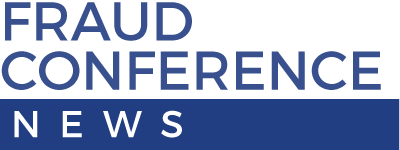Seeing the Art of the Possible with ChatGPT
/Global advisor and former chair of the ACFE Board of Regents Bethmara Kessler, CFE, walked fraud examiners through some of her favorite ways to use ChatGPT during her breakout session at the 36th Annual ACFE Global Fraud Conference.
The self-described data geek admitted that she once had trepidations about embracing new technologies, including Windows at one time, but has since learned to be drawn to them. Referring to what she calls “the art of the possible,” she told conference attendees she hoped to inspire their thinking. Rather than fearing tools like ChatGPT and running the risk of becoming obsolete, she says fraud examiners should embrace them.
Kessler provided an overview of how ChatGPT, a chatbot developed by OpenAI, answers submitted questions and generates content using advanced natural language processing. As the tool is constantly evolving, it’s important to be aware of both its changes and limitations. For example, features initially available with the free version of ChatGPT may not be accessible again later unless a user pays for a more robust version. The chatbot’s tone is also evolving. At one point when Kessler was using ChatGPT, it responded over-enthusiastically to the point of praising how she asked her questions. Its tone has since been changed in response to feedback from users.
ChatGPT also has limitations. The data it has access to and learns from depends on when its latest updates were, and so at times, it may be a little behind. Kessler also explained that its outputs can be biased, and she encouraged users to question any definitive answers they’re given that they’re unsure about.
To protect privacy, Kessler advises avoiding putting in any information that’s embarrassing and any personally identifiable information or sensitive information about a company. She also says not to rely on ChatGPT for expert advice.
Some ways Kessler does enjoy using ChatGPT include asking it to write a resignation letter. She once tested it by giving information about an employee and their company, and she was surprised by the thoughtful two-page letter it generated. ChatGPT can also provide helpful ideas in response to submitted questions about how to strike a work/life balance in different work environments, how to network with people as an introvert and even how to build the best prompts for asking ChatGPT questions.
Key to getting the most helpful responses from ChatGPT is being specific. Kessler advises users to specify the kind of tone they want and provide appropriate context. For example, if asking ChatGPT about how to deal with an embezzlement allegation, specify any nuances about that particular company. Does the answer need to be professional or casual, or even formatted for a LinkedIn post?
“You’re not always going to get the answer you want right off the bat,” Kessler said. She encourages focusing on clarity, context and intent when using this tool.
ChatGPT can also be used for personal guidance and coaching. Kessler said she and a friend once used it to create a mock interview fitted to a specific job. Users can also submit their resume content (with personal information omitted) and ask ChatGPT to critique it. It also constructs emails that a user can then revise and format to their own purposes before sending.
Rather than seeing it as an outsource tool, Kessler told conference attendees that ChatGPT can be thought of as a free advisory service. Fraud examiners can use it to unlock their thinking and see ideas and possibilities they never thought of before.



